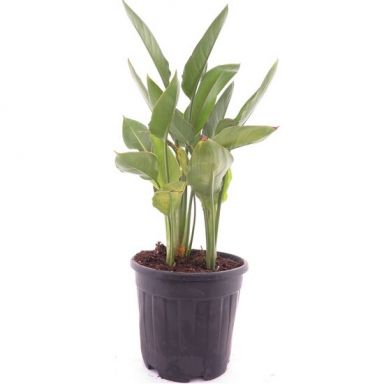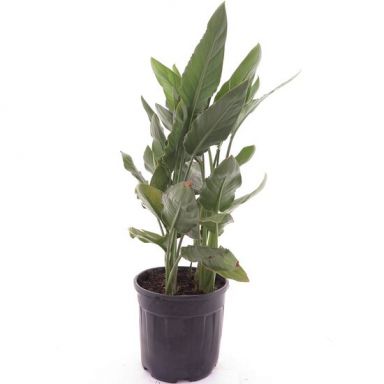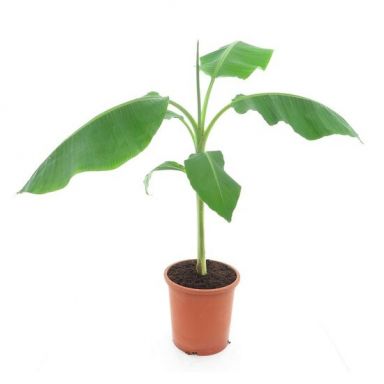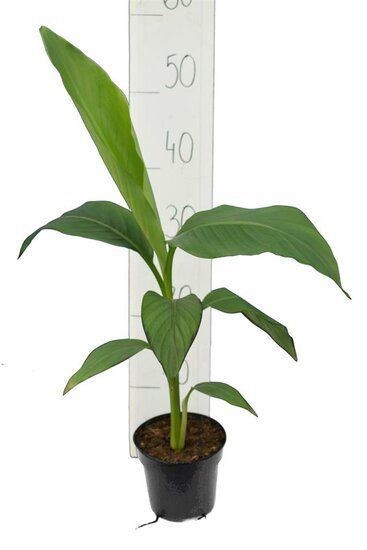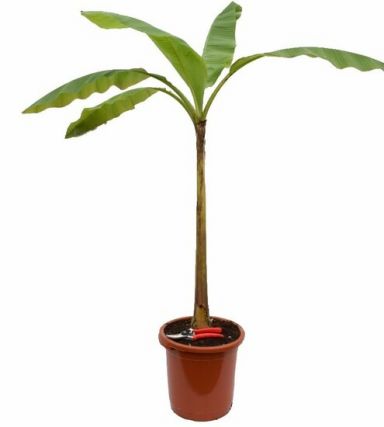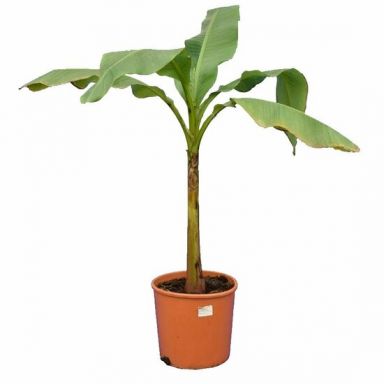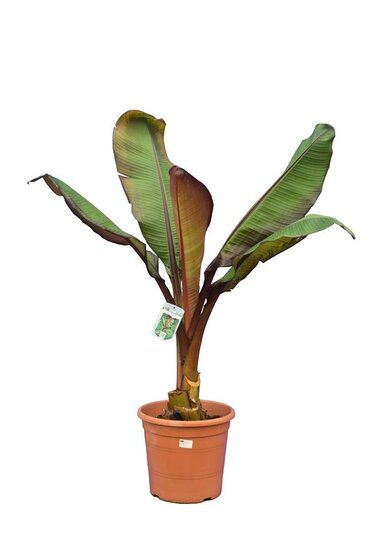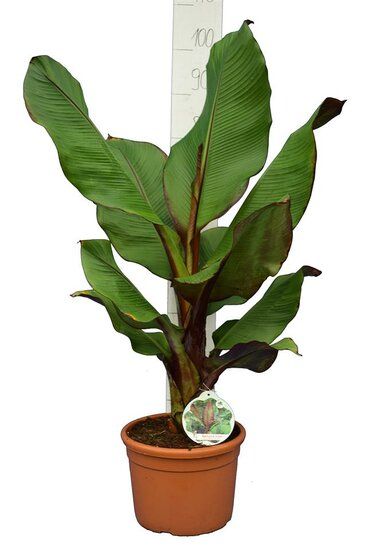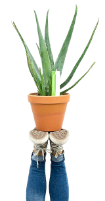Musa basjoo - Japanese fibre banana - hardy banana
Want an instant jungle-feel to your garden? Plant a Musa basjoo. This hardy banana grows rapidly and produces massive leek-like pseudostems of around 2m (6 feet) in length, crowned with huge, exotic 2m (6 feet) long and 70cm (30 inch) wide leathery leaves. The fruit is not really edible, and the plant can only with difficulty be encouraged to flower in our climes, as it needs around 1 to 2 years of warmth to bloom. But as an eye-catcher, this plant is hard to beat! Try it planted out in open ground or in a large pot. Read more below.
Care
The foliage is not evergreen, but the roots are considered hardy to -10C. The better you manage to protect the stem and roots, the better your plant will recover in spring. Protect the roots with a thick layer of straw or mulch around the base of the plant. Cut the old leaves off. The stem may be protected by wrapping with hay and then reed matting. Christmas lighting may even be integrated into this insulation to give that little bit of extra warmth on freezing nights. Be sparing with water during the cool months. If you discover that the pseudostem has not survived the winter, don’t worry; the plant will rapidly grow to its full size again in spring if the root has survived.
Musa basjoo is a hungry, thirsty plant. So your home-grown jungle needs a little work! Treat it to organic or fluid fertiliser every second week and water abundantly. It may be a chore, but your fully grown banana plant will have been worth it! The leaves of this plant are exotic to put it mildly. But there is a downside; they are vulnerable to wind damage and the plant can look a little ragged towards the end of the season. Of course, you can work to prevent this damage but erecting screens or even planting other Musa basjoo plants. Some simply accept the ‘ragged look’ for what it is.
The fibres of this plant are used in Japan to create textiles (bashofu), which are used for carpets, blankets and clothing such as kimonos. Paper is also made from the plant, and it is valued for its medicinal properties in China.
